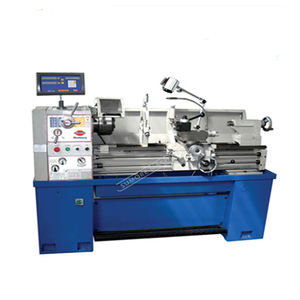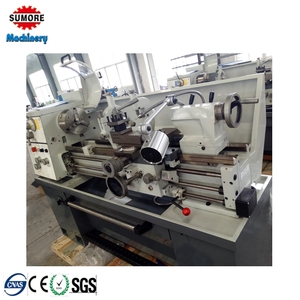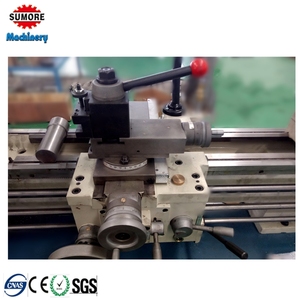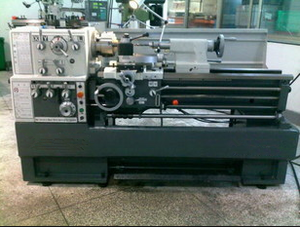
All categories
Featured selections
Trade Assurance
Buyer Central
Help Center
Get the app
Become a supplier

(1067 products available)






Market Overview: The global market for lathe machines, which includes turner lathe machines, was estimated at approximately USD 12.4 billion in 2023 and is projected to reach USD 15.4 billion by 2030, representing a compound annual growth rate (CAGR) of 3.2% during this period. This growth is significantly influenced by the automotive sector, where the demand for precision machining is expected to drive the automotive end-use segment to reach USD 7.3 billion by 2030, growing at a CAGR of 3.8%, according to Global Industry Analysts, Inc. Moreover, the overall lathe machines market is showing resilience, buoyed by advancements in automation and the increasing adoption of computer numerical control (CNC) technology, which enhances the efficiency and precision of turner lathe machines.
Regional Insights: Regionally, the U.S. market for lathe machines was valued at USD 3.3 billion in 2023, while China is projected to grow at a robust CAGR of 4.7%, reaching USD 3.0 billion by 2030. This growth is indicative of a broader trend of industrial expansion in emerging markets and the resurgence of manufacturing in developed economies. Additionally, consumer behavior is shifting towards more automated solutions, prompting manufacturers to innovate continuously. Despite challenges such as high costs and the need for skilled operators, the integration of IoT and predictive maintenance is expected to alleviate some pain points, thereby enhancing market accessibility and operational efficiency in the turner lathe machine segment.
Using a turner lathe machine, one can cut material into various shapes and forms like threads, coving, cylinders, etc. There are many types of turner lathe machines available in the market with different features and specifications.
Centered lathe machine
The centered machine has a straight bed, and the workpiece is held in place with a chuck or faceplate. The tool post is then adjusted to bring the cutting tool closer to the workpiece to start the cutting operation. A centered lathe machine is commonly used to make cylindrical objects like poles and rods from materials such as wood or metal. An operator can use this machine to make custom wooden furniture like chairs and tables.
Computerized numerical control (CNC) lathe machine
CNC machines are commonly used in manufacturing industries that mass-produce objects. This type of machine is very similar to the centered machine, but with an added computerized control system for better precision and accuracy while cutting. Furthermore, it allows an operator to automate the entire process and even program the machine to do more complex work that most basic lathe machines cannot do.
Turning center
A turning center is similar to a CNC lathe machine in that it also has a CNC control system. However, the main difference is that a turning center is equipped with more features and additional capabilities. A turning center machine can perform multiple operations like milling, threading, and drilling, to name a few. All thanks to the advanced machining process combined with CNC technology, which also helps to enhance the accuracy and efficiency of this machine. It usually has a V-shaped or box guiding, and the spindle can rotate at various speeds to accommodate all kinds of metals. Like the CNC machine, a turning center is ideal for use in high-demanding industries like aerospace, automotive, and electronics.
Mini/benchtop lathe machine
The mini or benchtop machine is usually smaller and has a lightweight construction. Like its name, it is designed to be placed on the work surface, making it very easy to store when not in use. The size and weight of this machine make it more convenient for small workshops to use and set up. Regardless of its smaller size, this machine can cut hard materials with precision and make detailed parts. The workpiece is held up by a spindle, and the cutting tool is mounted on the tool post to cut away excess material to create the desired shape. This machine is used in smaller workshops for precision machining for smaller, detailed workpieces.
The lathe machine is available in several specifications or varieties to meet diverse application needs. Below are some of them.
Proper maintenance of a lathe turning machine helps it achieve a high level of performance and operate for a long time with little downtime. Here are a few maintenance tips that can be of great help:
The working principle of the lathe turning machine makes it suitable for various application scenarios in many industries.
There are several things one should consider before purchasing a wood lathe machine. Those may include the wood size one intends to work with, working capacity, power requirements, budget constraints, the availability of tools in the market, one’s skill level, essential safety features, and any customizable attachments that come with the machine.
If someone is a beginner, it is always wise to start with small lathes like bench top or mini wood lathe machines. As your skills advance and confidence builds up, one may invest in more sophisticated and larger machines with advanced features. The same applies to budget constraints. Big industrial machines are very expensive. Many small businesses and startups may not afford them. It is always best to start with the small ones.
When choosing a lathe machine for wood, it is important to consider the maximum length and diameter of wood one can turn. Some small machines have a turning length of 356mm and a turning diameter of 230mm. Large wood lathe machines have greater specifications.
The main consideration when choosing a lathe machine is the power source. Electric lathes are easy to use and have many speed variations. The possibilities of turning wood are also endless. However, beginners may find it difficult to reverse the rotation direction and change the speed.
An important safety feature to look for is the emergency stop button. The role of this button is to immediately stop the machine when it is turning, especially in emergencies. Many wood lathes have the emergency button covered in plastic. The purpose is to prevent accidental shutdowns while working on wood.
The last thing one should consider is whether the parts and tools required for the machine are readily available. For most businesses, downtime is expensive and can cost a lot. Having readily available tools and parts optional to customize the machine can save the business a lot of costs.
Q1: What material is mainly used in a metal lathe machine?
A1: Metal lathes are capable of working with a wide range of alloys and materials, including titanium, brass, steel, aluminum, and carbon.
Q2: How does a CNC lathe work?
A2: CNC machines read instructions coded in G-Code or M-Code. The CNC turner machine processes the part after loading the material and putting the tool in place. The operator may start the machine manually or through programmed tooling.
Q3: What is the difference between a CNC lathe and a standard lathe?
A3: Unlike standard lathes that rely on manual power for control and movement, CNC machines read instructions coded in G-Code or M-Code. The operator may also start the machine manually or through programmed tooling.